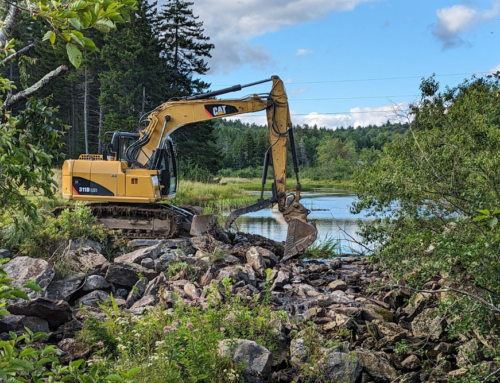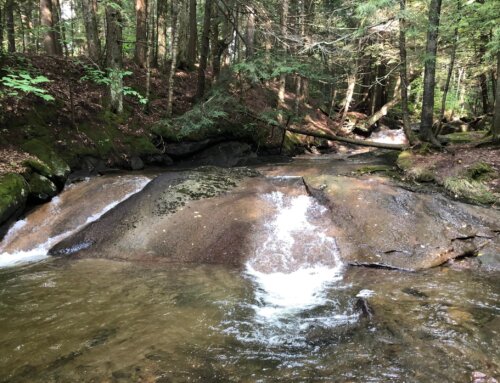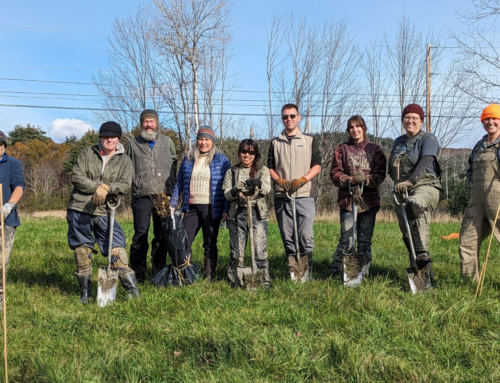January 2, 2012. Vermont. This year there has been an increased amount of discussion about the Atlantic salmon restoration program. The discussions have focused almost solely on the mistaken notion that low numbers of salmon returns are the only test of the success or failure of the Connecticut River Atlantic Salmon Restoration Program.
As background people should know that we began the effort to restore anadromous fish 200 years after the fish had been completely wiped out from the upper river system. The number of salmon returning is not the only issue for CRC. The issue is the Connecticut River’s capacity to support a range of aquatic life. The health of the river is the bigger and more important issue.
Just 60 years ago the Connecticut River was called “the best landscaped sewer in New England.” The River did not support a thriving diversity of aquatic life and people used the river to boat, swim or fish at their own risk. Since the passage of the Clean Water Act in 1972 the river has taken on a renewed life and major direct discharges of pollution have been reduced significantly.
But those successes are only part of the story; problems still abound in our watershed. Salmon do not spawn in the main river. They need access to small cold water tributaries with the right flow of water and the right gravel river bottom. Virtually all of the tributaries to the Connecticut River are blocked and fractured by old and unproductive dams that cause water temperature to increase to harmful levels and break up the continuity of the aquatic habitat. Old dams deny the salmon access to the habitat they need to spawn successfully. Over recent years the Restoration Program has been helping groups like the Watershed Council remove those dams but it is a long slow process. Along with dams, improperly installed culverts that are not “fish friendly” can and do provide barriers to the salmon reaching necessary spawning habitat.
Pollution from roads, parking lots, combined sewer overflows, farm fields and rooftops still send harmful pollutants into our River at increasingly unhealthy levels. Air deposition from coal and trash burning power plants still dump mercury and acid rain into the River. River bank riparian zones are still cut down indiscriminately and that opens the tree canopy over the River denying it necessary shade, in stream structure formed by fallen trees and woody nutrients.
There are tangible benefits of the Atlantic salmon restoration program beyond the number of fish. The benefits include the increased knowledge we are gaining about New England’s largest river ecosystem to address the ongoing problems mentioned above; the growing populations of other anadromous fish; the infrastructure of hatcheries, fishways, labs and expert personnel; and the singular interstate, intergovernmental and international cooperation focused on the Connecticut River. These are vital contributions to the environmental well being of our watershed and its related coastal ecosystem.
Beyond the number of fish, there is the community engagement the Restoration Program has nurtured all along the River. Each spring hundreds of volunteers up and down the watershed show up and distribute salmon fry in selected tributaries to the River. Students in our elementary schools, with the help of nonprofit organizations like Trout Unlimited, sponsor “Adopt a Salmon” programs that teach stewardship for the River.
We all like numbers and sometimes see high or low numbers as being the “be all and end all” of a story. But number counts of Atlantic salmon don’t tell the restoration story of the Connecticut River, or even the restoration story of anadromous fish coming back to the River. If the fish numbers are important to some people than we should look at all of the anadromous fish coming into the River not just salmon.
This year at the first dam upstream from Long Island Sound in Holyoke, MA 244,000 American Shad passed over the dam and of course there is the species no one likes but should, 19,000 Sea Lamprey. Sea Lamprey do not harm other fish in the Connecticut River because like all true anadromous fish they do not feed once they return to fresh water. The Lamprey when they return to their natal river to spawn and die they add important micro-amounts of washed out nutrients back to the headwater areas of the River. While Shad and Lamprey are not the namesake of the Connecticut River Atlantic Salmon Restoration Program, they—along with many other fish—benefit from its efforts and would likely be in worse shape if this program ceased to exist.
The restoration of the Connecticut River is a vital undertaking to which there are no “quick fixes” or easy answers. To judge the success of the Connecticut River Atlantic Salmon Restoration Program based on one number turns a blind eye to the complexity of the issues being addressed. We view the Restoration Program as one important tool in restoring the Connecticut, with Atlantic salmon being just one of our watershed’s species that is better off because of this multi-agency effort. Let’s stay the course on restoring Connecticut River anadromous fish; the results will restore all of us.
# # #
David L. Deen, River Steward for the Connecticut River Watershed Council. CRC is celebrating 60 years as a protector of the Connecticut River.







